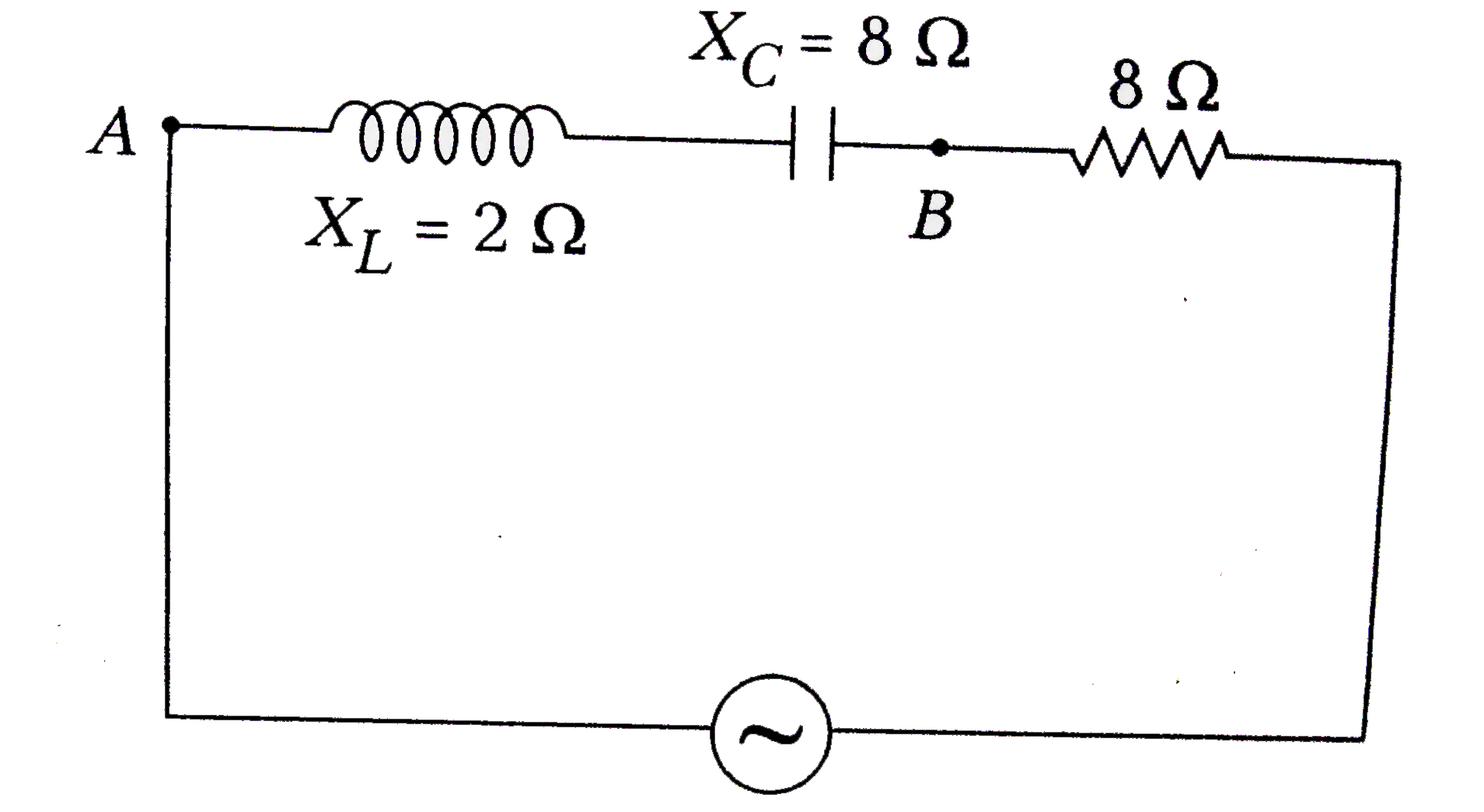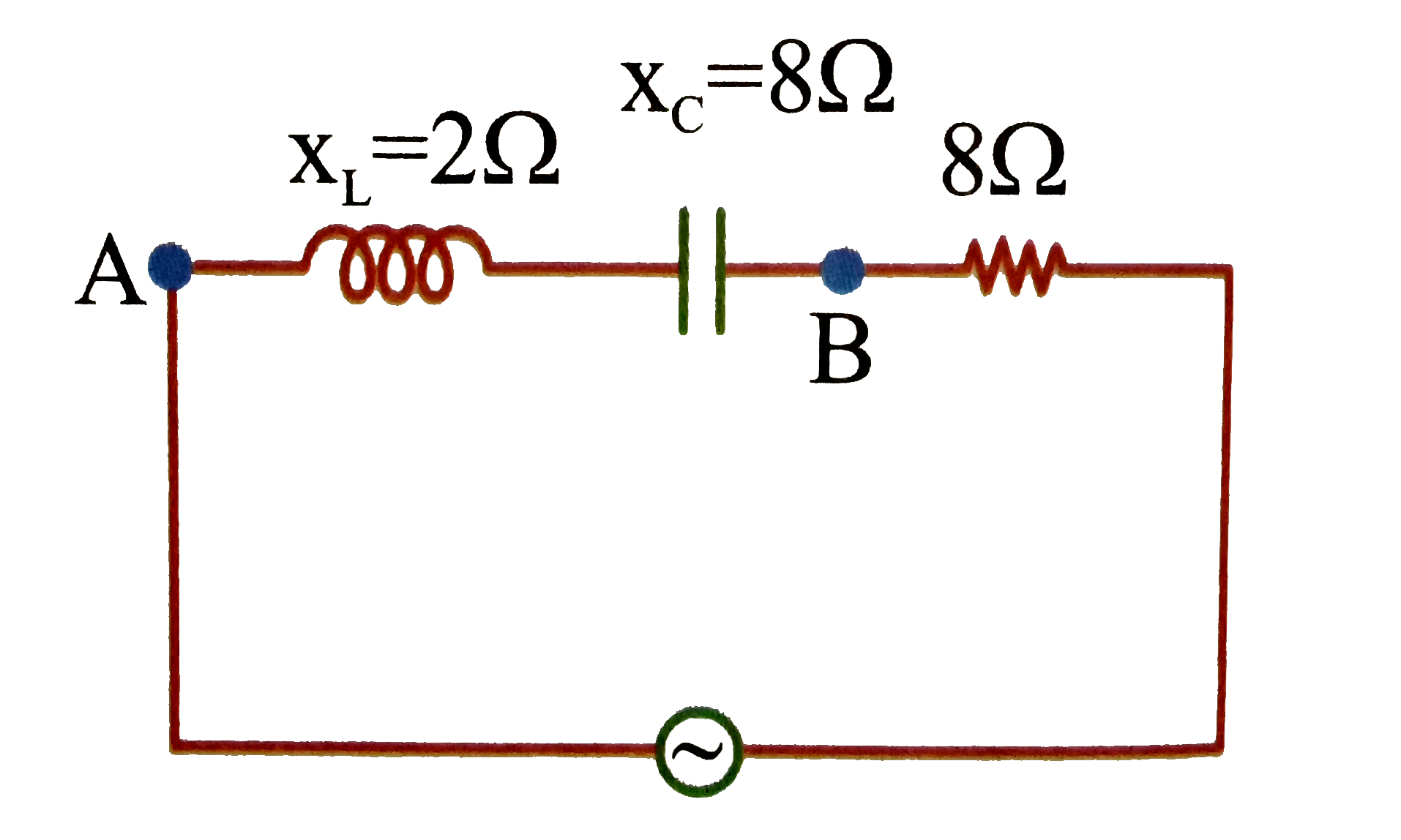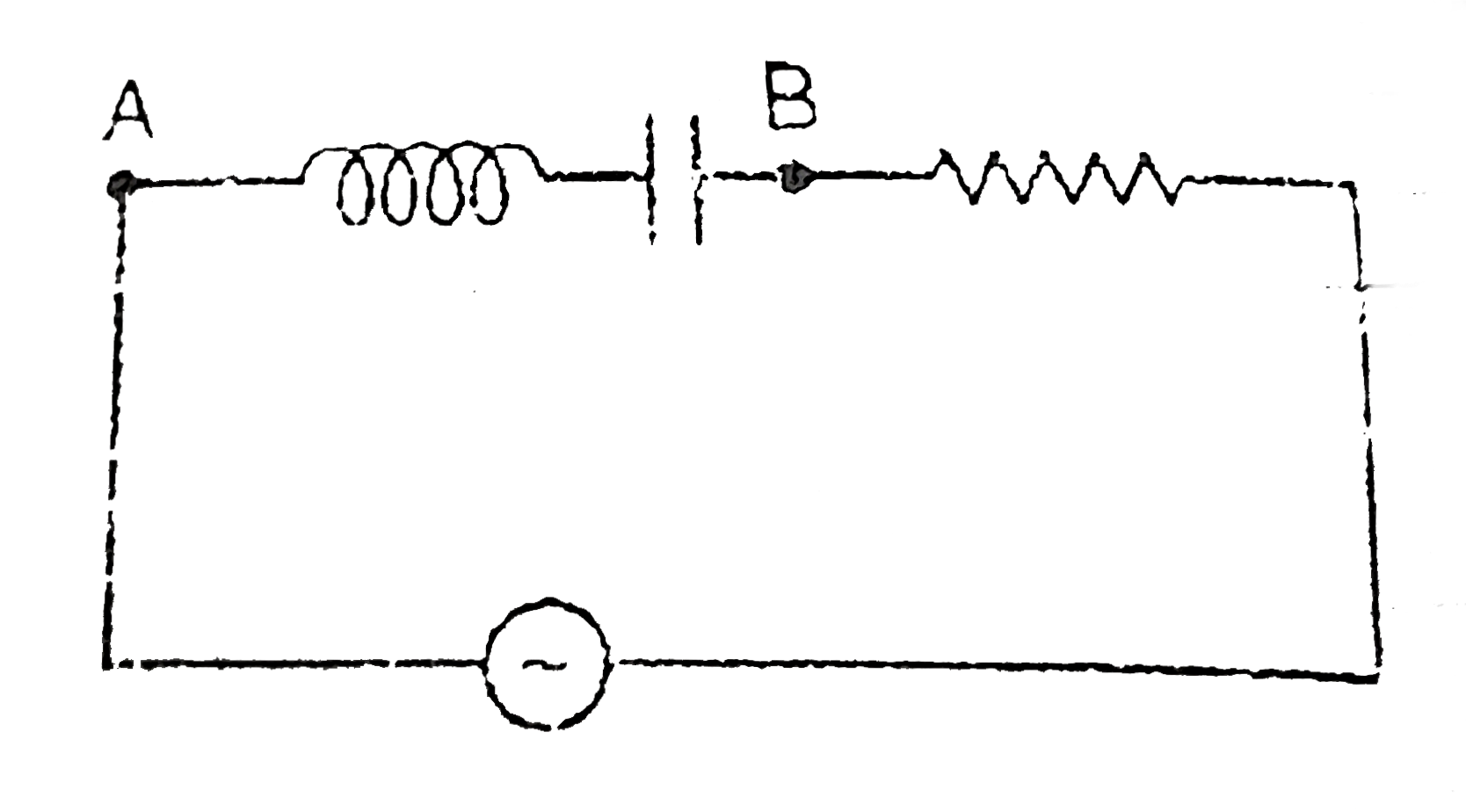An inductor XL = 2Ω ) , a capacitor (XC = 8Ω) and a resistance (R = 8 Ω ) are connected in series with an AC source . The voltage output of AC source is given by V = 10 cos(100πt)
The instantaneous potential difference between points A and B, when the applied voltage is 3/5th of the maximum value of applied voltage is

The correct Answer is:48
Step by step video, text & image solution for An inductor X_(L) = 2Omega ) , a capacitor (X_(C) = 8Omega) and a resistance (R = 8 Omega ) are connected in series with an AC source . The voltage output of AC source is given by V = 10 cos(100pit) The instantaneous potential difference between points A and B, when the applied voltage is 3/5th of the maximum value of applied voltage is by Physics experts to help you in doubts & scoring excellent marks in Class 12 exams.
Updated on:21/07/2023Topper's Solved these Questions
- ALTERNATING CURRENTBOOK - RESONANCECHAPTER - ALTERNATING CURRENTEXERCISE - Exercise -2 Part-3
14 Videos
- ALTERNATING CURRENTBOOK - RESONANCECHAPTER - ALTERNATING CURRENTEXERCISE - Exercise -2 Part-4
11 Videos
- ALTERNATING CURRENTBOOK - RESONANCECHAPTER - ALTERNATING CURRENTEXERCISE - Exercise -2 Part-1
14 Videos
- ATOMIC PHYSICSBOOK - RESONANCECHAPTER - ATOMIC PHYSICSEXERCISE - Advanved level problems
17 Videos
Similar Questions
In an L-R circuit, an inductance of 0.1 H and a resistance of 1Ω are connected in series with an ac source of voltage V = 5 sin 10 t. The phase difference between the current and applied voltage will be
View SolutionIn an L-R circuit, an inductance of 0.1 H and a resistance of 1Ω are connected in series with an ac source of voltage V = 5 sin 10 t. The phase difference between the current and applied voltage will be
View Solution
Knowledge Check
An inductor (XL=2Ω) a capacitor (XC=8Ω) and a resistance (8Ω) are connected in series with an ac source. The voltage output of A.C source is given by v=10cos100πt. The instantaneous p.d. between A and B when is half of the voltage output from source will be:
 A247 voltB245 voltC724 voltsD524 volts
A247 voltB245 voltC724 voltsD524 voltsAn inductor (L=1100πH), a capacitor (C=1500πF) and a resistance (3Ω) is connected in series with an AC voltage source as shown in the figure. The voltage of the AC source is given as V=10cos(100πt) volt. What will be the potential difference between A and B ?
 A8cos(100πt−127∘) voltB8cos(100πt−53∘) voltC8cos(100πt−37∘) voltD8cos(100πt+37∘) volt
A8cos(100πt−127∘) voltB8cos(100πt−53∘) voltC8cos(100πt−37∘) voltD8cos(100πt+37∘) voltA 100Ω resistance is connected in series with a 4H inductor. The voltage across the resistor is VR=2sin(1000t)V. The voltage across the inductors is
A80sin(1000t+π2)B40sin(1000t+π2)C80sin(1000t−π2)D40sin(1000π−π2)
A resistor and a capacitor are connected in series with an a.c. source. If the potential drop across the capacitor is 5 V and that across resistor is 12 V, applied voltage is
View SolutionA capacitor of capacitive reactance 79.62 Ω and a resistance of 100 Ω are connected in series across a.c. source. The phase difference between applied emf and current is
View SolutionA resistance of 200Ω and capacitor of 15μF are connected in series to a 220 V, 50 Hz AC source. The voltage (rms) across the resistor and capacitor is that
View SolutionA 0.21 H inductor and a 12Ω resistance are connected in series to a 220 V, 50 Hz ac source.
the phase angle between the current and the source voltage is
View SolutionA resistor 20Ω, inductive reactance 15Ω and capacitive reactance 15Ω are connected in series to an AC voltage source V=200√2sinωt. Then the maximum current in the circuit is
View Solution
